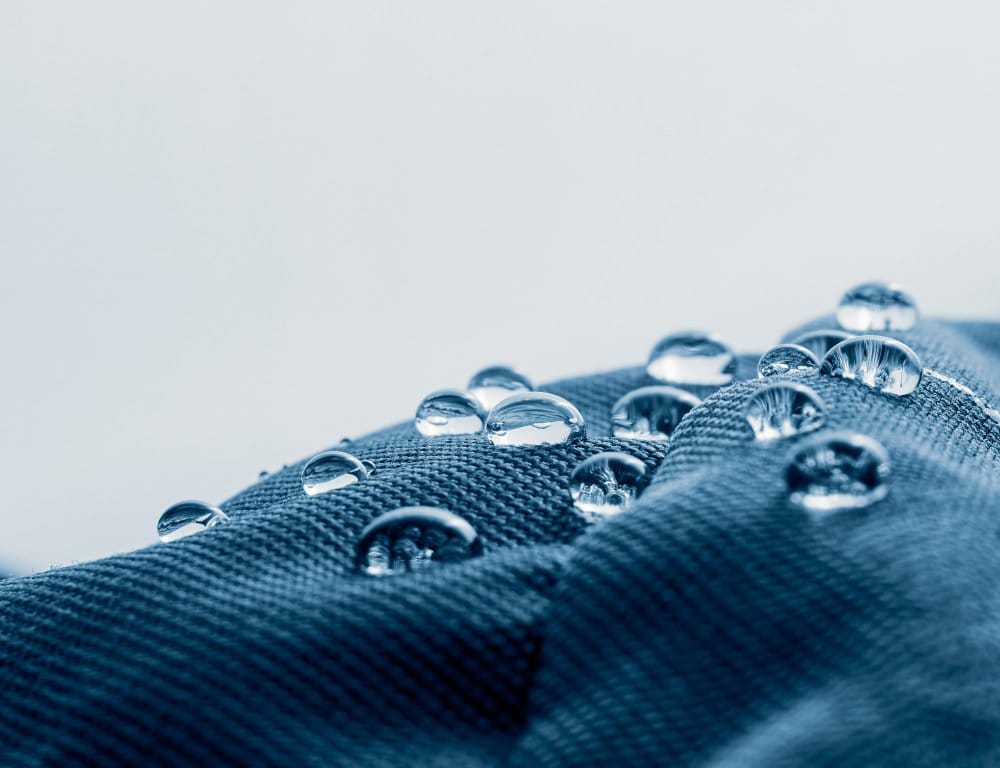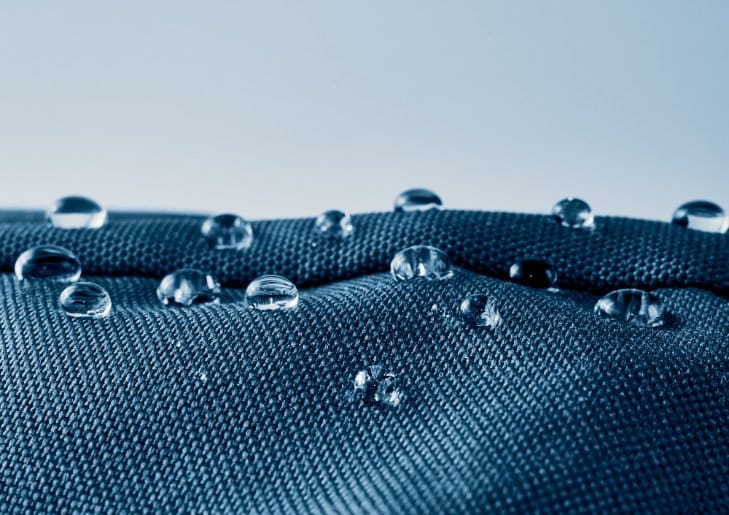From PFAS Phase-Out to Bio-Based Breakthroughs: Navigating the Future of Sustainable Water Protection
Water repellent products make life easier by helping to keep clothes, shoes, and outdoor gear dry. Water repellent works by adding a special coating or spray to materials, which makes water form droplets that roll off instead of soaking in. This simple science helps protect against rain and spills, keeping items clean and dry longer.
Many people are curious about what makes some fabrics or glass surfaces resist water. By understanding how water repellent technology works and how it is applied, they can make smarter choices when shopping for things like jackets or protecting gear. Learning about these products helps people decide how to care for their belongings and get the most out of them.
Table of Contents
What is Water Repellent?
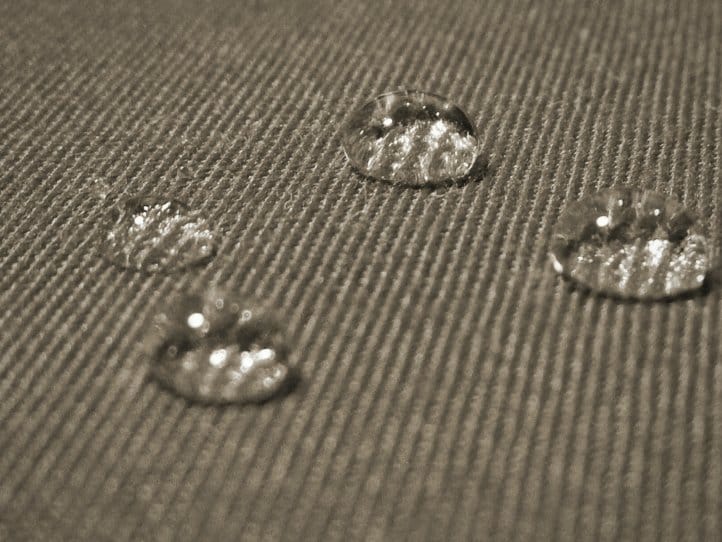
Water repellent refers to a surface treatment or material property that causes water to bead up and roll off rather than soaking into the fabric. Unlike waterproof materials that completely block water penetration, water repellent fabrics maintain breathability while providing protection against light to moderate moisture.
The key difference lies in the approach: water repellent treatments work at the molecular level to reduce the surface energy of fibers, creating conditions where water droplets cannot easily spread or penetrate. This technology allows air and water vapor to pass through while keeping liquid water on the surface.
Key Takeaways
- Water repellent uses coatings to stop water from soaking in
- Different materials and technologies affect how well items repel water
- Proper care can help water repellent products last longer
- Calculate your optimal treatment choice based on budget and performance needs
- Environmental regulations are driving innovation toward sustainable alternatives
The Science Behind Water Repellency
Water repellency is possible because of how surfaces interact with water molecules. Hydrophobic materials, surface tension, and the angle at which water meets a surface are all key factors that keep water droplets from sticking or soaking in.
Hydrophobicity and Surface Tension
A hydrophobic material does not let water spread out on its surface. Instead, water forms round droplets. This happens because the surface pushes water away at a molecular level.
Surface tension is an important part of this process. Water molecules stick together tightly, creating a sort of “skin” on the surface. When they land on a hydrophobic surface, the water molecules want to cling to each other more than to the surface.
Common hydrophobic materials include waxes, certain plastics, or fabrics treated with special coatings. These substances are used in raincoats, electronics, and building materials to keep water from soaking in.
The effect of hydrophobicity combined with the natural surface tension of water keeps most of the liquid on the outside as droplets, allowing it to roll off easily.
Role of Contact Angle in Water Repellency
The contact angle is the angle where the edge of a water droplet meets the surface. This angle shows if a surface is water-repellent or not.
- If the contact angle is greater than 90°, the surface is hydrophobic, causing water to bead up
- If the angle is less than 90°, the surface is hydrophilic and water will spread out
A high contact angle means stronger water repellency. Engineers and scientists measure this angle with special tools to test how effective a material is at repelling water.
Materials with very high contact angles, sometimes over 150°, are called superhydrophobic and provide excellent protection against water. The contact angle is a simple but powerful way to check and compare the water-repellent properties of different surfaces.
Water Repellent vs Waterproof vs Water Resistant: Understanding the Differences

Understanding the distinctions between these three terms is crucial for making informed purchasing decisions.
Water Repellent vs Waterproof
| Feature | Water Repellent | Waterproof |
|---|---|---|
| Water Protection | Causes water to bead and roll off surface | Completely blocks water penetration |
| Breathability | High – allows air and vapor to pass through | Limited – often blocks air circulation |
| Durability | Moderate – coating wears off over time | High – permanent barrier when intact |
| Applications | Light rain, everyday protection | Heavy rain, submersion protection |
| Comfort | More comfortable for active use | Can trap moisture and heat |
Is water-repellent as good as waterproof? The answer depends on your needs. Water repellent is better for active use because it breathes, preventing overheating. Waterproof is superior for extreme conditions but can be uncomfortable for extended wear.
Is water repellent better than waterproof? For most everyday activities, yes. Water repellent offers the best balance of protection and comfort. Choose waterproof only when complete water protection is absolutely necessary.
Water Repellent vs Water Resistant
Water resistant and water repellent are often confused but have distinct differences:
- Water Resistant: A general term indicating some level of water protection, often measured by how long fabric can withstand water pressure
- Water Repellent: Specifically refers to surface treatments that cause water to bead and roll off
Water repellent is typically more advanced than basic water resistance, offering better protection through active surface chemistry rather than just tight weave construction.
How Water Repellent Products Work

Water repellent products use special chemicals or treatments to help fabric resist water. These techniques add a protective layer to the material, which helps prevent liquids from soaking in while still allowing air to pass through.
Types of Water Repellents
There are several main types of water repellents used for fabrics, each with unique characteristics and performance profiles.
- Spray-on water repellents are applied directly to the outside of clothes or gear. They coat the surface and are easy to use for spot treatments. These products typically last 6-12 months depending on use and care.
- Wash-in water repellents are added to washing machines. They soak into the entire fabric, coating all fibers for more even coverage. These treatments generally provide longer-lasting protection than spray-on versions.
- Factory-applied treatments are integrated during manufacturing and offer the most durable protection. These professional-grade applications can last 2-5 years with proper care.
Both consumer and factory treatments use chemicals that create a thin, invisible layer. This layer helps shed water and keeps fabric drier. Common chemicals include silicones, fluoropolymers, and increasingly, bio-based alternatives.
How Does Water Repellent Fabric Work?
Water repellent fabric works through a combination of fiber properties and surface treatments:
- Surface Chemistry Modification: Treatments alter the surface energy of individual fibers, making them hydrophobic
- Molecular Barrier Creation: Microscopic coatings form barriers that water molecules cannot easily penetrate
- Lotus Effect Mimicry: Advanced treatments create micro-textures that enhance water beading and rolling
- Fabric Structure Optimization: Tight weaves combined with treatments provide multiple layers of protection
The fabric stays breathable because treatments don’t block air holes or cover surfaces with thick films. Air and sweat can still escape while liquid water is repelled.
Mechanism of DWR Treatments
Durable water repellent (DWR) finishes work by changing the surface chemistry of the material.
DWR treatments attach microscopic particles to fabric fibers. These particles lower the surface tension, so water forms beads and rolls off instead of being absorbed.
The fabric stays breathable because the DWR finish does not block air holes or cover the whole surface with a thick film. Air and sweat can still escape, keeping the material comfortable.
DWR coatings may wear out over time, especially after washing or abrasion. They can be restored with reapplication using spray-on or wash-in products. DWR treatments do not make fabrics fully waterproof but do improve water resistance, helping clothing stay drier in light rain or when exposed to splashes.
The PFAS Revolution: Environmental Sustainability in Water Repellent Technology
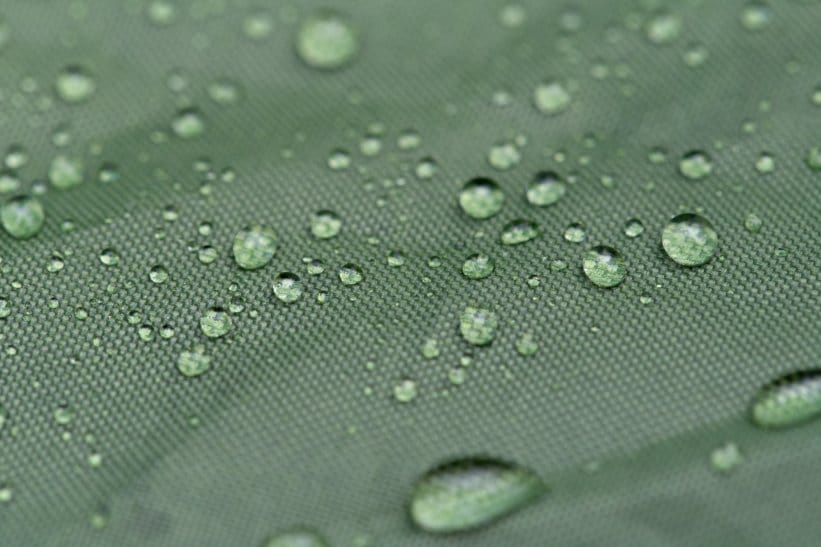
The water repellent industry is undergoing a massive transformation as environmental concerns drive innovation away from traditional fluorinated chemicals.
Understanding PFAS and the Phase-Out
PFAS (perfluoroalkyl and polyfluoroalkyl substances) are synthetic chemicals that have been used in water repellent treatments for decades. These “forever chemicals” persist in the environment for thousands of years and accumulate in human bodies, raising serious health concerns.
Current Regulatory Timeline:
- January 2025: California and New York ban PFAS in textiles
- January 2026: France prohibits PFAS in textiles and waterproofing agents
- July 2026: Denmark bans PFAS-containing clothing and footwear
- 2025-2027: European Union considering comprehensive PFAS restrictions
PFAS-Free Alternatives: The New Generation
The industry has responded with innovative alternatives that maintain performance while eliminating environmental risks:
Silicone-Based Technologies
- Create flexible, durable coatings that repel moisture
- Allow fabric breathability while maintaining water resistance
- Generally safer environmental profile than PFAS
- Performance approaching traditional fluorinated treatments
Water-Based Repellents
- Use hydrophobic treatments that form protective barriers
- Easier application and lower environmental impact
- Suitable for consumer reapplication products
- Growing adoption in outdoor and athletic wear
Bio-Based Solutions
Revolutionary natural alternatives are emerging:
| Alternative | Source | Performance | Environmental Impact |
|---|---|---|---|
| Chitosan | Crustacean shells | Antimicrobial + water repellent | Biodegradable, sustainable |
| Beeswax coatings | Natural bee products | Good water resistance | Limited scalability |
| Soy-based polymers | Plant proteins | Moderate performance | Fully renewable |
| Modified plant waxes | Various plant sources | Variable performance | Biodegradable |
MIT’s Breakthrough iCVD Technology
Researchers at MIT developed initiated chemical vapor deposition (iCVD) coating that:
- Uses shorter-chain polymers for reduced environmental impact
- Creates uniform coatings without clogging fabric pores
- Eliminates need for secondary processing to restore breathability
- Achieves perfect scores on standard rain-repellency tests
Brand Leadership in Sustainability
Patagonia’s 15-Year Journey: After beginning PFAS phase-out in 2013, Patagonia achieved 96% PFAS-free water-repellent materials by 2024, with complete elimination by Spring 2025.
Polartec’s Innovation: Launched Power Shield fabric using plant-based, PFAS-free technology for expedition-grade performance.
Industry Collaboration: Major brands are sharing sustainable solutions within supply chains to accelerate industry-wide transformation.
Materials and Technologies in Water Repellency
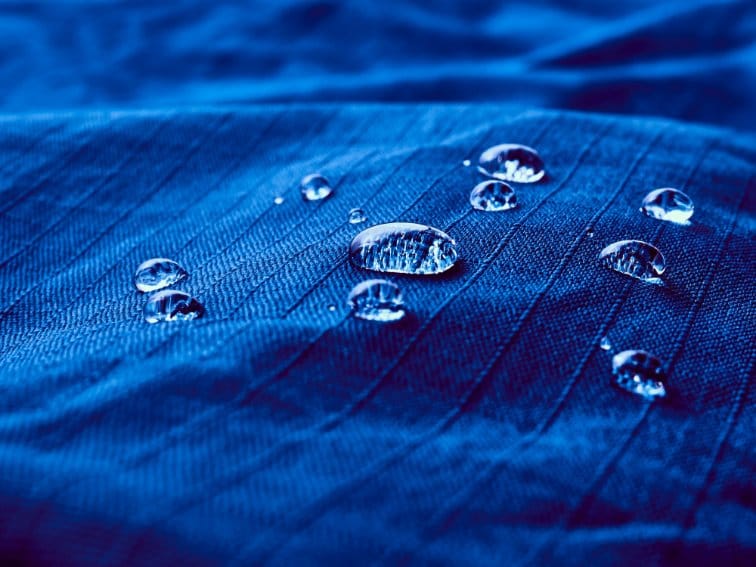
Water repellent materials work by stopping water from soaking in or passing through fabric. This is done using special coatings and advanced fabric structures that change how water interacts with the surface.
Advanced Chemical Coatings
Many water repellent items use coatings made from chemicals like silicone or next-generation fluoropolymer alternatives. These coatings create a thin layer on the surface that lowers the surface energy of the fabric. Because of this, water forms droplets and rolls off instead of soaking in.
Ultra-Hydrophobic Organosilicon Polymers: Recent breakthroughs by research institutes have developed PFAS-free alternatives using plasma technology to create ultra-hydrophobic coatings with performance matching traditional fluorinated treatments.
Some coatings are applied to natural or synthetic fabrics, including nylon and polyester. These synthetic fabrics have a tight weave, which helps block water along with the coating. Many jackets and outdoor gear use both the dense weave and a chemical coating to achieve waterproofness.
Breathable Membranes and Fabrics
Other materials use breathable membranes instead of or in addition to chemical coatings. These membranes such as Gore-Tex have microscopic pores. Water droplets can’t get through these tiny holes, but water vapor from sweat can escape.
This makes the fabric both waterproof and breathable. Gear made with these membranes is popular for sports and outdoor activities because it helps keep users dry and comfortable. Breathable membranes are often sandwiched between layers of fabric to give extra durability.
Next-Generation Membrane Technologies:
- Polyurethane-based microporous membranes (MemBrain, Texapore)
- Polyester membrane systems (Sympatex)
- Bio-based membrane innovations in development
Breathable fabrics use a combination of dense weaves and these membranes to balance water resistance and air flow. The use of Gore-Tex and similar technologies has greatly improved how well clothing can block rain without trapping heat or moisture inside.
Water Repellent Performance and Testing Standards
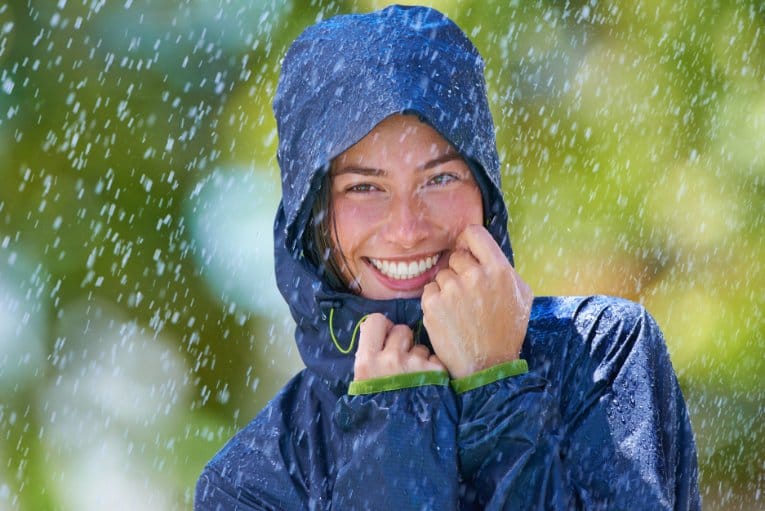
Industry Testing Standards and Quality Metrics
Understanding how water repellent performance is measured helps consumers make informed decisions and manufacturers ensure quality.
AATCC Testing Standards
AATCC 22 Spray Test is the most widely used standard for measuring water repellency:
- Water is sprayed against taut fabric under controlled conditions
- Results rated on 0-100 scale (100 = best performance)
- Test duration: 25-30 seconds standard, extended testing up to 120 minutes for advanced evaluation
- Evaluates wetted pattern size compared to standard charts
AATCC 193 Aqueous Liquid Repellency Test:
- Uses graduated surface tension test solutions
- Rates performance on 0-8 scale (8 = best)
- More precise differentiation between similar treatments
International Standards Comparison
| Standard | Rating Scale | Primary Use | Key Features |
|---|---|---|---|
| AATCC 22 | 0-100 points | US industry standard | Spray test method |
| ISO 4920 | 0-5 grades | International standard | Similar to AATCC 22 |
| GB/T 4745 | 0-5 grades | Chinese standard | Aligned with ISO |
| ISO 9865 | Multi-factor | European standard | Bundesmann rain test |
Advanced Testing Methods
Extended Duration Testing: Recent research shows that standard 30-second tests may not differentiate between treatments that perform differently over time. Extended 60-120 minute tests reveal significant performance differences, with fluorinated treatments showing 1.37g less water absorption than non-fluorinated alternatives after 120 minutes.
Bundesmann Rain Test (ISO 9865): Simulates real-world rainfall conditions by measuring:
- Water penetration resistance
- Surface wetting patterns
- Fabric saturation rates
- Performance under continuous exposure
Does Water-Repellent Spray Actually Work?
Yes, water-repellent sprays are effective when properly applied and maintained. However, their performance depends on several factors:
Effectiveness Factors:
- Fabric type: Works best on synthetic fabrics and tightly woven materials
- Application method: Even, thorough coverage essential for optimal performance
- Environmental conditions: Temperature and humidity during application affect bonding
- Maintenance: Regular reapplication needed to maintain effectiveness
Performance Expectations:
- Light rain protection: Excellent performance for 30+ minutes
- Moderate rain: Good protection for 15-30 minutes
- Heavy rain: Limited protection, water may eventually penetrate
- Durability: Consumer sprays typically last 6-12 months with regular use
Performance Factors for Water Repellent Items

The quality of water repellent items depends on how long they last, how comfortable they feel, and how well they keep out water under rough conditions. These factors impact whether a jacket or gear stays useful for outdoor activities such as hiking or skiing.
Durability and Longevity
The ability of a water repellent item to last depends on several factors. The type of coating or treatment, like Durable Water Repellent (DWR), affects how often users need to reapply treatments. Frequent washing or abrasion from backpacks can reduce the effectiveness of coatings. High-quality garments often use advanced treatments to strengthen water resistance and extend life.
Care instructions, such as gentle washing, air drying, or reapplying repellent, help keep items in good shape. While no treated fabric lasts forever, items made for skiing or regular outdoor use tend to use tougher materials and coatings to boost durability.
Does Water-Repellent Wear Off?
Yes, water-repellent treatments gradually wear off through normal use and washing. The degradation process involves:
Primary Wear Factors:
- Mechanical abrasion: Backpack straps, washing machine agitation, general wear
- Chemical breakdown: Detergents, UV exposure, heat damage coating molecules
- Environmental exposure: Salt water, dirt, oils from skin accelerate degradation
- Time: Even unused items slowly lose effectiveness over 2-5 years
Signs of Wear:
- Water no longer beads on surface
- Fabric feels “wetter” during light rain
- Longer drying times after exposure to moisture
- Visible water absorption patterns
How Long Does Water-Repellent Spray Last?
Treatment longevity varies significantly based on quality and use patterns:
| Treatment Type | Expected Duration | Reapplication Frequency |
|---|---|---|
| Consumer spray-on | 6-12 months | Every season or 10-15 washes |
| Wash-in treatments | 12-18 months | Every 20-30 washes |
| Factory DWR | 2-5 years | Professional retreatment recommended |
| Premium treatments | 3-7 years | Varies by use intensity |
Longevity Tips:
- Follow manufacturer care labels exactly
- Avoid harsh detergents and fabric softeners
- Air dry when possible to prevent heat damage
- Re-treat DWR coatings when water stops beading on the surface
- Store items properly to prevent UV degradation
Is Water-Repellent Permanent?
No water-repellent treatment is truly permanent. Even the most durable factory-applied treatments will eventually wear off through use, washing, and environmental exposure. However, some treatments are more durable than others:
Most Durable Options:
- Factory-applied fluorinated DWR (being phased out for environmental reasons)
- Professional-grade silicone treatments
- Integrated fiber treatments applied during manufacturing
Renewable Options:
- Consumer spray and wash-in products allow for reapplication
- Professional retreatment services can restore factory-level performance
- Regular maintenance can extend overall garment life significantly
Comfort and Breathability
Comfort and breathability matter for anyone active outdoors. Water repellent fabrics should keep rain out but let sweat vapor escape to prevent overheating or clamminess. Many items use membranes or thin coatings that block water but still let air flow.
Key Features for Comfort:
- Lightweight materials for easy movement
- Soft linings that feel good against the skin
- Vents or mesh panels to boost airflow
- Strategic placement of treatments to avoid stiffness
Breathability is often rated by how much water vapor passes through the fabric. For high-intensity activities like running or skiing, better breathability is important so users stay drier inside their jackets.
Performance Metrics:
- MVTR (Moisture Vapor Transmission Rate): Measures breathability in grams per square meter per 24 hours
- Air permeability: Cubic feet per minute of air flow through fabric
- Thermal regulation: Ability to maintain comfortable body temperature
Will Water Repellent Keep You Dry?
Water repellent treatments will keep you dry in light to moderate conditions, but performance depends on several factors:
Excellent Protection:
- Light drizzle and mist
- Brief exposure to moderate rain
- Snow that doesn’t melt immediately on contact
- Splash protection from puddles or spray
Limited Protection:
- Prolonged heavy rain (over 30 minutes)
- High wind driving rain into fabric
- Submersion or direct water pressure
- Extremely wet conditions where saturation is inevitable
Enhancement Strategies:
- Layer water repellent outer shell over insulating layers
- Use umbrellas or other primary protection in heavy rain
- Choose garments with sealed seams for critical areas
- Combine water repellent treatments with tight fabric weaves
Resistance to Weathering
Water repellent items must withstand more than just light rain. Weathering involves exposure to wind, sun, dirt, and repeated wetting and drying. UV rays can break down some coatings, making items less effective over time. Mud, salt, and sweat from activities like skiing can also weaken treatments.
Garments designed for harsh conditions usually have extra layers or reinforced areas to handle these stresses. Some fabrics are tested for resistance to fading, wear, and chemical exposure to show they can keep protecting even after many uses.
Environmental Stress Testing:
- UV exposure chambers: Simulate years of sun exposure in controlled conditions
- Salt spray testing: Evaluate performance in marine environments
- Temperature cycling: Test coating stability through freeze-thaw cycles
- Chemical resistance: Exposure to common contaminants and cleaning agents
Common threats to weather resistance:
- UV sunlight and temperature swings
- Dirt and abrasion from trails
- Chemicals from sweat, sunscreen, or pollution
- Salt water exposure in marine environments
- Industrial pollutants in urban areas
Global Market Analysis and Industry Trends
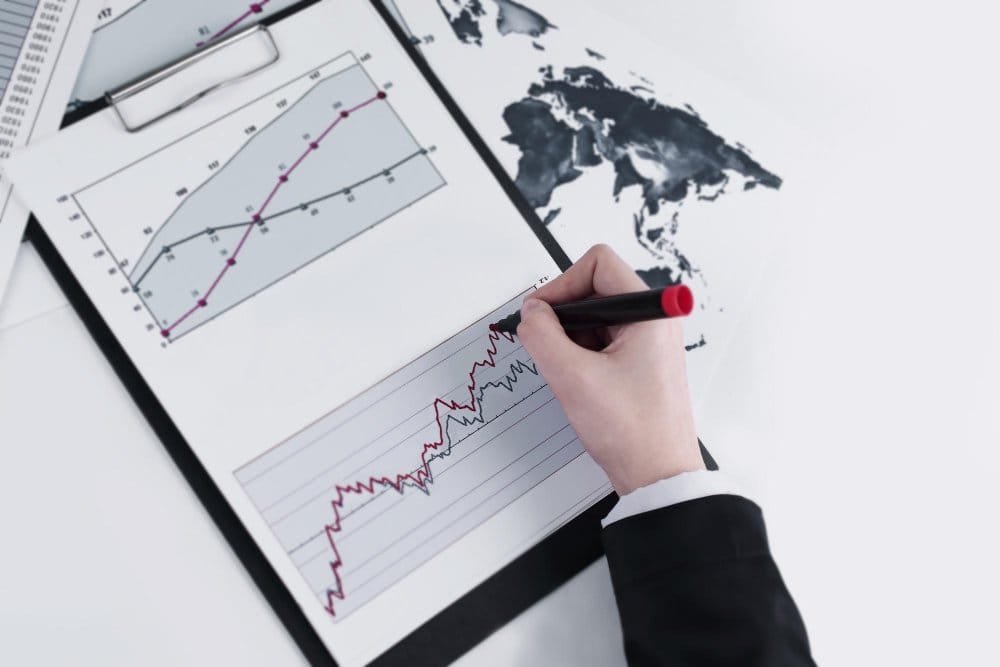
Market Size and Growth Projections
The global water repellent textile market demonstrates robust growth driven by increasing outdoor activities, environmental awareness, and technological innovation.
Market Valuation:
- 2023 market value: $2.125 billion globally
- 2030 projected value: $2.938 billion
- Growth rate: 5.09% CAGR (2024-2030)
- Alternative market assessment: $11 billion (2023) reaching $18.78 billion (2033) at 5.50% CAGR
Regional Market Leadership
Asia-Pacific Dominance (35% market share)
- Manufacturing hubs: China, India, Bangladesh lead production
- Innovation centers: Japan, South Korea driving R&D
- Cost advantages: Lower production costs with improving quality
- Sustainability focus: Rapid adoption of eco-friendly technologies
North American Innovation
- Market leaders: United States and Canada dominate high-performance segment
- Brand presence: Gore, Polartec, and other premium manufacturers
- Technology development: Advanced membrane and coating research
- Regulatory leadership: Early PFAS restrictions driving innovation
European Sustainability Leadership
- Environmental regulations: Strictest PFAS restrictions globally
- Market demand: Germany, France, UK leading sustainable fabric adoption
- Innovation focus: Bio-based alternatives and circular economy solutions
- Industry collaboration: Strong research partnerships between companies and universities
Key Industry Players and Competitive Landscape
Market Leaders:
- DSM: Advanced polymer technologies and sustainable solutions
- Toray Industries: Fiber innovation and membrane technologies
- Gore: Premium waterproof breathable membranes
- Sympatex: Sustainable membrane alternatives
- Arkema: Chemical coating innovations
- Polartec: Performance fabric technologies
Emerging Competitors:
- P2i: Nano-coating specialists
- HZO Waterproof Technologies: Electronic device protection
- Green Theme Technologies: PFAS-free textile finishing platform
Growth Drivers and Market Opportunities
Primary Growth Drivers:
- Rising outdoor recreation participation (hiking, climbing, extreme sports)
- Increasing demand for protective workwear across industries
- Growing environmental consciousness driving sustainable alternatives
- Technological innovations in nanotechnology and bio-based coatings
Emerging Opportunities:
- Smart textile integration with water repellent properties
- Medical and healthcare applications requiring liquid protection
- Automotive and aerospace interior applications
- Home furnishing and architectural textile markets
Applying and Maintaining Water Repellency
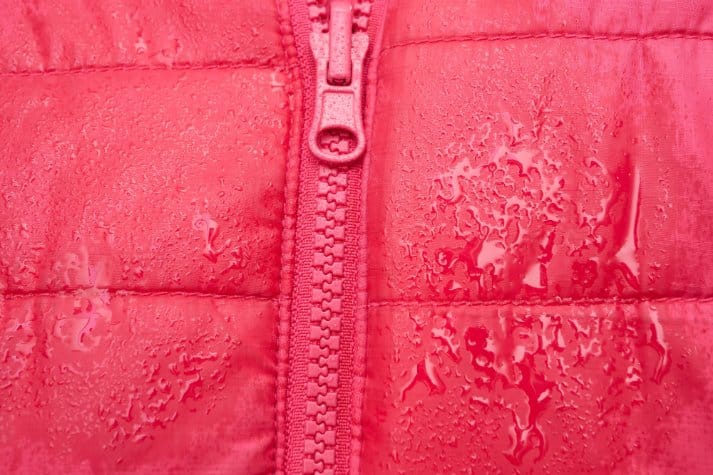
Water repellent clothing and gear need special care to keep their protective qualities. Proper cleaning, drying, and heat treatment help prevent water from soaking through the fabric.
Cleaning and Drying Techniques
Clean water repellent items with a gentle detergent that is free from additives, fabric softeners, or bleach. These ingredients can leave residues that block water-repellent coatings.
Use a cold or warm wash and avoid overstuffing the washing machine. Rinse thoroughly to remove all soap, as leftover detergent can weaken repellency.
After washing, air dry the item if the tag allows, or tumble dry on low. Do not wring or twist the fabric. This ensures the coating is not damaged.
Comprehensive Care Guidelines
| Do | Don’t |
|---|---|
| Use gentle, residue-free detergent | Use bleach, fabric softeners, or harsh chemicals |
| Wash in cold/warm water (30-40°C) | Use hot water above 40°C |
| Rinse thoroughly to remove all soap | Leave detergent residue on fabric |
| Air dry or tumble dry on low heat | Use high heat or direct sunlight |
| Close all zippers and fasten Velcro | Leave closures open during washing |
| Wash similar items together | Mix with heavily soiled or abrasive items |
Effect of Heat and Drying
Heat can help reactivate certain types of durable water repellent (DWR) coatings. After washing, placing items in a dryer on low to medium heat for about 20 minutes can restore water-repellent performance.
The warmth helps the treatment spread evenly and improves surface tension, which causes water to bead rather than soak in. If a dryer is not available, ironing on low with a towel between the iron and fabric can have a similar effect.
Do not use high heat, as this might melt or damage the waterproof layer. Always check the care instructions before applying heat. Heating is only recommended for fabrics that specify it is safe.
Heat Reactivation Process:
- Clean fabric thoroughly and ensure complete drying
- Apply low heat (40-60°C) for 15-20 minutes in dryer
- Alternative method: Low-temperature ironing with protective cloth
- Test effectiveness by sprinkling water on treated surface
- Repeat if necessary but avoid overheating
Professional Retreatment Options
When consumer treatments prove insufficient, professional services offer factory-grade retreatment:
Professional Services:
- Specialized equipment for even application
- Industrial-grade chemicals not available to consumers
- Quality testing and performance verification
- Warranty coverage for treatment effectiveness
When to Consider Professional Treatment:
- High-value outdoor gear requiring maximum performance
- Items with complex construction (multiple fabrics, membranes)
- Gear used in extreme conditions requiring reliable protection
- Business or commercial applications needing consistent performance
Water Repellency in Outdoor Gear and Applications
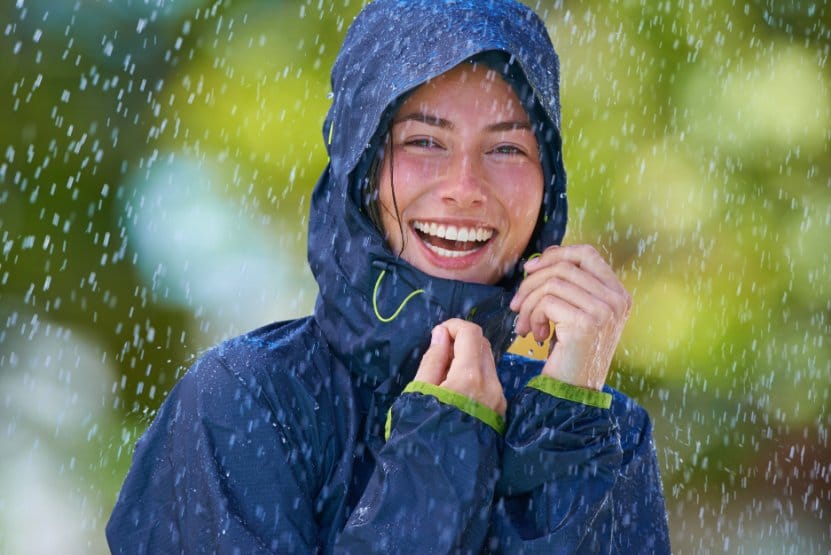
Water repellency helps outdoor gear keep the user dry and comfortable during rain or wet activities. The effectiveness of this technology depends on fabric treatments and design, offering different levels of protection for daily and technical use.
Rainwear and Everyday Use
Rainwear like jackets and pants often use Durable Water Repellent (DWR) treatments. DWR coats the outer fabric, making water bead up and roll off instead of soaking in. This helps keep clothing lightweight and quick-drying.
The repellent coating increases the surface tension, so water droplets stay on top of the fabric. Most basic rainwear is water-repellent but not fully waterproof. Prolonged or heavy rain may still allow moisture to get through.
Everyday jackets, shoes, and bags may also use these coatings. Users should reapply DWR after washing or when water stops beading, as the treatment wears off over time. Maintaining this layer is important for long-lasting protection.
Can You Waterproof a Water Repellent Jacket?
While you cannot make a water repellent jacket completely waterproof without altering its fundamental structure, you can significantly enhance its water protection:
Enhancement Methods:
- Seam sealing: Apply waterproof tape to critical seam areas
- Zipper treatment: Use waterproof zippers or zipper guards
- Enhanced DWR: Apply professional-grade treatments for better performance
- Layering systems: Combine with waterproof base layers for complete protection
Limitations:
- Breathability will be reduced with waterproofing modifications
- Fabric flexibility may be compromised
- Complete waterproofing requires membrane integration (not feasible as retrofit)
- Cost-effectiveness compared to purchasing waterproof gear
Technical Applications: Advanced Construction Systems
3-layer construction is common in advanced outdoor gear for climbing, hiking, or skiing. This design sandwiches a waterproof membrane between a tough outer fabric and a comfortable inner lining. Many 3-layer pieces also have a DWR finish on the outside.
The waterproof membrane blocks water from reaching the skin, while the DWR keeps the outer surface from becoming waterlogged. This design increases durability and breathability, making it ideal for harsh weather or active use.
4-Layer and Advanced Systems:
- Additional protective layers for extreme conditions
- Specialized membrane technologies for specific applications
- Integrated ventilation systems for enhanced comfort
- Smart fabric integration for performance monitoring
Technical 3-layer products are usually tested for high performance. They hold up better in long-term use and under heavy rain than single-layer or basic water-repellent gear. Many brands list these layers and coatings in their product specifications for easy comparison.
Specialized Applications
Military and Tactical Gear
- Enhanced durability requirements for combat conditions
- Chemical resistance for hazardous environment protection
- Camouflaged treatments that maintain visual concealment
- Multi-threat protection combining water, chemical, and flame resistance
Medical and Healthcare
- Barrier protection for medical professionals
- Antimicrobial properties combined with water repellency
- Comfort during extended wear in high-stress environments
- Easy decontamination procedures for reuse
Industrial Applications
- Chemical splash protection for manufacturing workers
- Oil and solvent resistance in petrochemical industries
- High-temperature stability for extreme work environments
- Arc flash protection combined with water repellency
Innovative Water Repellent Solutions and Future Technologies
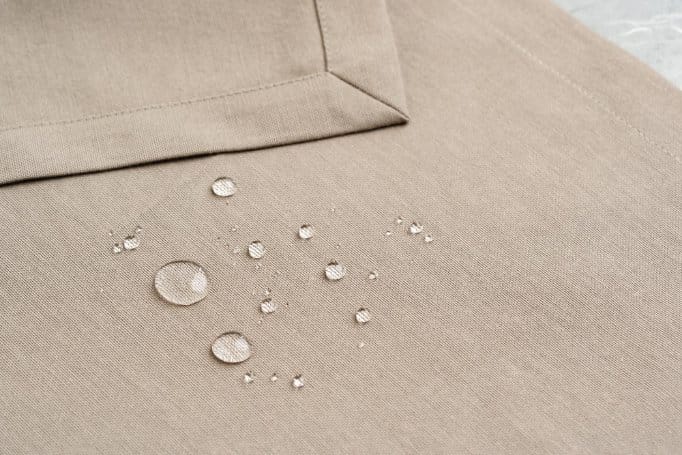
Modern water repellent products use advanced science to stop water from soaking into surfaces. These solutions often create a thin, almost invisible layer that changes how water behaves on glass, fabric, and other materials.
Breakthrough Technologies
Nanotechnology Applications
- Nanoparticle Integration: Advanced treatments incorporate nanoparticles directly into fabric fibers during manufacturing, creating permanent water repellency that cannot wash out. These particles create microscopic surface textures that enhance the lotus effect.
- Self-Cleaning Properties: Biomimetic treatments that replicate lotus leaf structures provide both water repellency and self-cleaning capabilities. As water droplets roll off, they carry away dirt and contaminants.
- Smart Responsive Coatings: Next-generation treatments that adapt to environmental conditions, providing enhanced protection when moisture is detected while maintaining maximum breathability in dry conditions.
Bio-Based Innovation Breakthroughs
Recent scientific breakthroughs have produced PFAS-free alternatives that match or exceed traditional fluorinated performance:
- Protein-Based Polymers: Derived from agricultural waste, these treatments provide excellent water repellency while remaining completely biodegradable.
- Chitosan Enhancement: Modified chitosan from shellfish waste offers antimicrobial properties alongside water repellency, ideal for medical and athletic applications.
- Plant Wax Combinations: Sophisticated blends of multiple plant waxes create durable, renewable treatments suitable for large-scale applications.
RainX and Specialized Surface Treatments
RainX is a popular water repellent for car windshields. This solution forms a hydrophobic layer that causes rainwater to bead up and roll off the glass. The main goal is to improve visibility and safety during wet conditions.
Applying RainX is simple. The liquid is wiped onto clean glass and left to dry. The treated surface then becomes water resistant, as water no longer spreads out but instead beads up and moves away.
Advanced Automotive Applications:
- Ceramic coatings: Long-lasting treatments that provide superior durability
- Self-healing polymers: Coatings that repair minor scratches automatically
- Anti-icing treatments: Combined water repellency and ice prevention
- UV protection: Integrated protection against sun damage
Other specialized treatments exist for shoes, jackets, and even electronics. These solutions also use chemical coatings or nano-technologies. When applied, they help objects repel water, keeping them dry and lasting longer. Each product is designed for specific surfaces and usage needs.
Emerging Smart Textile Integration
- IoT-Connected Fabrics: Integration of water repellent treatments with smart sensors that monitor performance and alert users when retreatment is needed.
- Self-Regulating Systems: Fabrics that automatically adjust water repellency based on activity level and environmental conditions.
- Performance Analytics: Embedded sensors that track treatment effectiveness over time and provide data for optimizing care and maintenance.
Decision-Making Framework for Water Repellent Selection
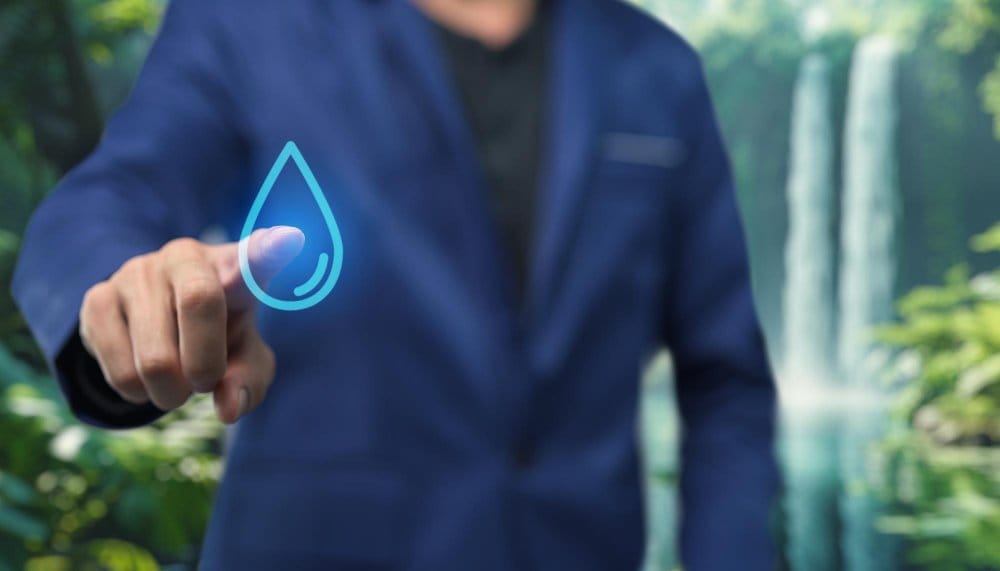
Need Visual Guidance?
Our interactive flowchart walks you through the decision process step-by-step, considering your specific use case, budget, and environmental priorities.Use Interactive Flowchart to find your perfect treatment in 60 seconds
Treatment Selection Flowchart
Performance vs Sustainability Matrix
| Treatment Type | Performance Score | Environmental Score | Best Application |
|---|---|---|---|
| Traditional PFAS | 9/10 | 2/10 | Legacy gear (being phased out) |
| Silicone-based | 7/10 | 6/10 | General outdoor use |
| Bio-based wax | 5/10 | 9/10 | Light-duty applications |
| MIT iCVD | 8/10 | 8/10 | Next-generation premium gear |
| Chitosan hybrid | 6/10 | 8/10 | Medical and athletic wear |
Cost-Benefit Analysis Tool
Consumer Treatment Costs (Annual):
- DIY spray treatments: $15-30 per year
- Wash-in treatments: $25-40 per year
- Professional retreatment: $50-100 per garment
- Premium factory treatments: $200-500 initial cost
Calculate Your Optimal Treatment Choice
Ready to find the perfect water repellent treatment for your needs and budget? Our interactive calculator analyzes total costs, performance ratings, and environmental impact to provide personalized recommendations.
🧮 Use Our Cost Calculator Get personalized recommendations in less than 1 minutes
Regulatory Compliance and Global Standards
Current Regulatory Landscape
The regulatory environment for water repellent chemicals is rapidly evolving, with significant implications for manufacturers and consumers worldwide.
United States Regulations
- California AB 1817: Prohibits PFAS in textiles effective January 1, 2025
- New York State: Similar PFAS textile ban implemented January 2025
- Federal EPA Action: Drinking water standards for PFAS under review (2025)
- State-by-State Variations: 35 states have introduced 480+ PFAS-related policies
European Union Framework
- REACH Regulation: Comprehensive chemical safety legislation affecting water repellent treatments
- PFAS Restriction Proposal: Under consideration for 2025-2026 implementation
- ECHA Guidelines: European Chemicals Agency providing industry guidance
- Member State Actions: Individual countries implementing faster timelines
International Standards
- Stockholm Convention: Global treaty addressing persistent organic pollutants
- OECD Guidelines: International cooperation on chemical safety
- ISO 14001: Environmental management systems for manufacturers
Compliance Strategy for Brands
Documentation Requirements:
- Chemical composition disclosure for all treatments
- Supply chain transparency and chemical tracking
- Third-party testing and certification
- Regular compliance auditing and reporting
Transition Planning:
- Phase-out timeline development for PFAS treatments
- Alternative technology validation and testing
- Supply chain partner alignment and training
- Consumer communication and education programs
Future Trends and Technological Innovations

Emerging Technologies on the Horizon
Artificial Intelligence in Fabric Development
- Machine learning: Optimizing treatment formulations through predictive modeling
- Performance prediction: AI algorithms forecasting treatment durability
- Quality control: Automated inspection systems for treatment consistency
- Consumer matching: AI-powered recommendations for optimal treatment selection
Circular Economy Integration
- Recyclable treatments: Coatings designed for easy removal during textile recycling
- Biodegradable polymers: Complete lifecycle sustainability from application to disposal
- Closed-loop manufacturing: Systems that capture and reuse treatment chemicals
- Take-back programs: Brand initiatives for treatment renewal and garment refurbishment
Advanced Materials Science
- Graphene integration: Ultra-thin treatments with exceptional durability
- Shape-memory polymers: Treatments that adapt to fabric stretch and movement
- Self-healing coatings: Automatic repair of minor treatment damage
- Quantum dot enhancement: Nano-scale improvements in hydrophobic properties
Industry Collaboration and Innovation
Research Partnerships
- University collaborations: Academic research advancing sustainable alternatives
- Cross-industry cooperation: Automotive, aerospace, and textile industries sharing innovations
- Government funding: Public investment in PFAS alternative development
- International consortiums: Global research initiatives addressing chemical safety
Technology Transfer Programs
- Open-source development: Shared research accelerating industry-wide adoption
- Patent cooperation: Collaborative licensing for sustainable technologies
- Startup incubation: Supporting innovative companies developing alternatives
- Knowledge sharing platforms: Industry databases of alternative technologies
Consumer Guidance and Practical Applications

Brand Recommendations by Use Case
Daily Urban Use
- Recommended Brands: Patagonia (PFAS-free options), Outdoor Research, Arc’teryx (sustainable lines)
- Treatment Type: Consumer spray-on or wash-in treatments
- Reapplication: Every 6-12 months or 10-15 washes
- Performance Expectation: Light rain protection, breathable comfort
Outdoor Recreation
- Recommended Brands: Gore-Tex Pro (premium membranes), Polartec Power Shield, Sympatex
- Treatment Type: Factory DWR with membrane backing
- Reapplication: Professional retreatment every 2-3 years
- Performance Expectation: Moderate to heavy rain protection, high durability
Extreme Conditions
- Recommended Brands: Mammut, The North Face Summit Series, Rab
- Treatment Type: Multi-layer systems with premium treatments
- Reapplication: Professional assessment annually
- Performance Expectation: Maximum protection, specialized performance features
Treatment Effectiveness Timeline
New Treatment Performance Curve
Month 1-3: Peak Performance (95-100% effectiveness)
Month 4-6: High Performance (85-95% effectiveness)
Month 7-12: Good Performance (70-85% effectiveness)
Month 13-18: Declining Performance (50-70% effectiveness)
Month 19+: Replacement Needed (<50% effectiveness)
Note: Timeline varies significantly based on use intensity, care practices, and environmental exposure
Maintenance Schedule Template
Weekly Care
- Brush off surface dirt and debris
- Air dry thoroughly after use
- Store in ventilated area away from direct sunlight
Monthly Care
- Inspect for treatment wear indicators
- Spot clean stains with gentle methods
- Check manufacturer care instructions updates
Seasonal Care
- Comprehensive washing following care guidelines
- Performance testing with water droplet test
- Professional assessment for high-value items
- Retreatment application if needed
Annual Care
- Professional inspection and treatment evaluation
- Deep cleaning and restoration services
- Treatment renewal for premium gear
- Documentation of performance and care history
Advanced Troubleshooting and Problem Resolution

Common Performance Issues
Water No Longer Beads
Diagnosis: Treatment degradation or contamination
Solutions:
- Clean with specialized detergent to remove residue buildup
- Apply heat reactivation treatment (if compatible)
- Retreat with appropriate spray-on or wash-in product
- Consider professional retreatment for premium items
Reduced Breathability
Diagnosis: Pore clogging from treatment buildup or contamination
Solutions:
- Thorough cleaning with residue-free detergent
- Multiple rinse cycles to ensure complete soap removal
- Professional cleaning for membrane-based garments
- Avoid over-application of treatments
Uneven Water Protection
Diagnosis: Inconsistent treatment application or wear patterns
Solutions:
- Reapply treatment with careful attention to even coverage
- Use wash-in treatments for more uniform distribution
- Professional retreatment for consistent results
- Replace severely worn items where treatment cannot be restored
Performance Restoration Techniques
Heat Reactivation Method
- Clean garment thoroughly using appropriate detergent
- Ensure complete drying before heat application
- Apply controlled heat using dryer (low setting) or iron (with protective cloth)
- Test effectiveness immediately after cooling
- Document results for future reference
Chemical Restoration Process
- Remove all contaminants with deep cleaning
- Select appropriate retreatment product based on fabric type
- Apply following manufacturer instructions precisely
- Allow proper curing time before use
- Verify performance with water droplet test
Environmental Impact and Sustainability Considerations
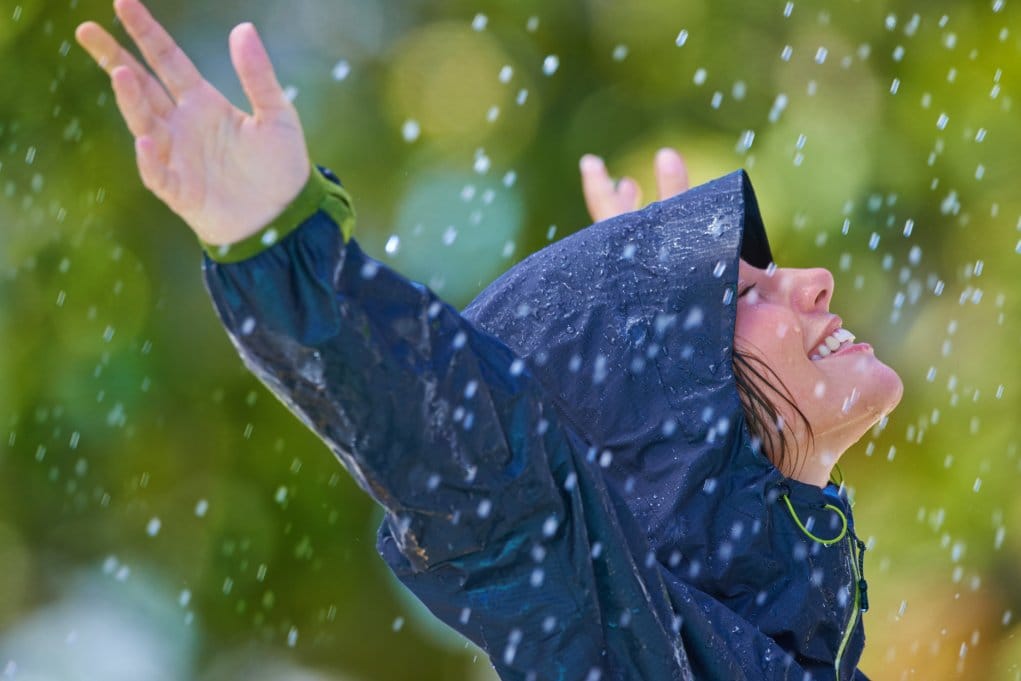
Life Cycle Assessment of Water Repellent Treatments
PFAS-Based Treatments (Traditional)
- Production Impact: High energy intensity, toxic chemical handling
- Use Phase: Long-lasting performance, minimal reapplication needed
- End of Life: Persistent environmental contamination, bioaccumulation
- Overall Rating: High performance, severe environmental cost
Silicone-Based Alternatives
- Production Impact: Moderate energy use, safer chemical handling
- Use Phase: Good performance, moderate reapplication frequency
- End of Life: Limited biodegradability, minimal bioaccumulation
- Overall Rating: Balanced performance and environmental impact
Bio-Based Solutions
- Production Impact: Low energy use, renewable feedstocks
- Use Phase: Variable performance, frequent reapplication may be needed
- End of Life: Complete biodegradability, no environmental persistence
- Overall Rating: Lower performance, excellent environmental profile
Carbon Footprint Comparison
| Treatment Type | Production CO2 (kg/garment) | Transport CO2 | Use Phase CO2 | Total Impact |
|---|---|---|---|---|
| PFAS-based | 2.5 | 0.3 | 0.2 | 3.0 kg CO2 |
| Silicone | 1.8 | 0.3 | 0.4 | 2.5 kg CO2 |
| Bio-based | 0.9 | 0.2 | 0.6 | 1.7 kg CO2 |
Note: Use phase CO2 includes reapplication frequency and transportation for maintenance
Sustainable Purchasing Guidelines
Consumer Decision Framework
- Assess actual needs: Avoid over-specification for light-duty applications
- Choose PFAS-free options: Prioritize environmental safety when performance allows
- Consider longevity: Higher initial cost may justify better environmental profile
- Plan for maintenance: Factor ongoing care requirements into decision
- Support innovation: Choose brands investing in sustainable alternatives
Corporate Procurement Strategy
- Supplier assessment: Evaluate environmental practices and chemical policies
- Performance standards: Balance protection requirements with sustainability goals
- Volume commitments: Support suppliers developing sustainable alternatives
- End-of-life planning: Consider recycling and disposal impacts in purchasing decisions
Conclusion
Water repellent technology stands at a pivotal moment in its evolution, balancing decades of proven performance with urgent environmental imperatives and rapid technological innovation. This comprehensive analysis reveals an industry undergoing fundamental transformation as it moves away from persistent PFAS chemicals toward sustainable alternatives that maintain protective performance while safeguarding human health and environmental integrity.
Key Technological Insights
The science behind water repellency remains elegantly simple in principle yet increasingly sophisticated in application. Surface energy modification through hydrophobic treatments creates the essential water-beading effect, but modern implementations now incorporate nanotechnology, biomimetic design, and smart responsive materials. The contact angle measurement serves as the fundamental metric, with angles exceeding 90 degrees indicating effective water repellency and superhydrophobic surfaces achieving angles above 150 degrees.
Traditional DWR treatments, while effective, face inevitable replacement by next-generation alternatives. Silicone-based technologies currently offer the best balance of performance and environmental safety, while bio-based solutions using chitosan, plant waxes, and protein polymers show promising development trajectories. MIT’s breakthrough iCVD coating process demonstrates that innovation can achieve superior performance while eliminating environmental concerns, setting new benchmarks for the industry.
Market Evolution and Industry Response
The global water repellent textile market’s projected growth from $2.125 billion in 2023 to $2.938 billion by 2030 reflects both increasing demand and successful technological transition. Asia-Pacific’s manufacturing dominance, North American innovation leadership, and European regulatory pioneering create a dynamic global landscape driving rapid advancement.
Industry leaders like Patagonia, Gore, and Polartec demonstrate that successful PFAS elimination is achievable without compromising performance. Patagonia’s 15-year transition journey, culminating in 96% PFAS-free materials by 2024, provides a roadmap for industry-wide transformation. The collaborative approach of sharing sustainable solutions within supply chains accelerates collective progress beyond individual corporate capabilities.
Regulatory Impact and Compliance Strategy
The regulatory timeline for PFAS restrictions is accelerating globally, with California and New York implementing textile bans in January 2025, followed by European restrictions expected by 2026. This regulatory pressure catalyzes innovation while creating compliance challenges for manufacturers operating in multiple jurisdictions.
Successful compliance strategies require comprehensive chemical tracking, supply chain transparency, alternative technology validation, and proactive consumer communication. Companies that treat regulatory compliance as an innovation opportunity rather than a burden position themselves advantageously in the evolving marketplace.
Performance Optimization Through Proper Care
Understanding the relationship between care practices and treatment longevity enables consumers to maximize investment value while minimizing environmental impact. Factory-applied treatments lasting 2-5 years with proper care significantly outperform consumer applications requiring seasonal renewal, but both categories benefit from informed maintenance practices.
The heat reactivation technique for DWR treatments, proper detergent selection, and strategic reapplication timing can extend treatment life by 50-100%. Professional retreatment services offer factory-grade restoration for premium gear, making economic and environmental sense for high-value items subjected to intensive use.
For a visual, step-by-step approach to making your final decision, try our interactive treatment selection flowchart that simplifies the entire process.
Future Technology Trajectory
Emerging technologies including AI-optimized formulations, self-healing coatings, and smart responsive treatments promise to revolutionize water repellent performance. Integration with IoT sensors and performance analytics will enable predictive maintenance and customized treatment recommendations based on individual use patterns.
The convergence of materials science, environmental engineering, and consumer electronics creates opportunities for treatments that adapt dynamically to conditions, provide real-time performance feedback, and integrate seamlessly with circular economy principles.
Environmental Stewardship and Sustainable Innovation
The transition away from PFAS represents more than regulatory compliance; it demonstrates industry capacity for fundamental technological evolution driven by environmental responsibility. Bio-based alternatives, while currently showing variable performance, benefit from rapid development and increasing sophistication.
Life cycle assessment reveals that bio-based treatments, despite requiring more frequent reapplication, often demonstrate superior overall environmental profiles when production, use, and disposal phases are considered comprehensively. This analysis supports consumer choices prioritizing sustainability while accepting modest performance trade-offs.
Strategic Recommendations
For Consumers:
- Choose PFAS-free alternatives when performance requirements permit
- Invest in proper care and maintenance to maximize treatment longevity
- Consider professional retreatment for premium gear to extend useful life
- Support brands demonstrating genuine commitment to sustainable innovation
- Match treatment selection to actual use requirements rather than over-specifying
For Industry Professionals:
- Accelerate PFAS elimination timelines to exceed regulatory requirements
- Invest in employee training for sustainable alternative technologies
- Develop comprehensive supply chain transparency and chemical tracking systems
- Collaborate with competitors on industry-wide sustainability initiatives
- Implement consumer education programs explaining performance and care optimization
For Policymakers:
- Coordinate international regulatory approaches to minimize trade disruption
- Provide research funding and tax incentives for sustainable alternative development
- Support small and medium enterprises in compliance transition planning
- Establish clear performance standards for PFAS alternatives to guide innovation
- Create certification programs enabling consumer identification of sustainable products
Final Perspective
Water repellent technology exemplifies how environmental challenges can drive innovation that ultimately benefits all stakeholders. The current transition period, while presenting short-term complications, positions the industry for long-term sustainability and continued growth.
Success in this evolving landscape requires embracing both technological innovation and environmental responsibility as complementary rather than competing objectives. Companies, consumers, and regulators who recognize this synergy will shape the future of water repellent technology while contributing to broader environmental stewardship goals.
The next decade will determine whether the industry successfully completes its transformation while maintaining the performance standards that consumers depend upon for safety, comfort, and protection in challenging environments. Early indicators suggest that innovation, collaboration, and commitment to sustainability principles provide a viable path forward for all industry participants.

